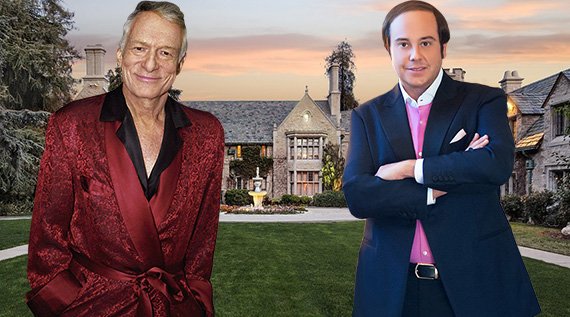
The Playboy Mansion Won’t Be Demolished After All
New owner Daren Metropoulos and Los Angeles city council member Paul Koretz
signed a protection covenant agreeing not to demolish the house
The Playboy Mansion will live on despite the death of its famous owner, Hugh Hefner, according to an agreement recently signed between new owner Metropoulos and the city of Los Angeles. The agreement, referred to as a permanent protection covenant, states that Metropoulos will agree not to demolish the 14,000-square-foot main residence where Hefner threw raucous parties and hosted a bevy of live-in beauties. The covenant even extends to any future owners who take over the house. The agreement also, importantly, allows Metropoulos to restore the home and modernize it in a way that Hefner approved of prior to his September 2017 death.
“I’m extremely passionate about its architecture and look forward to this momentous opportunity to transform one of the finest estates in the country,” Metropoulos said in a statement. “As Mr. Hefner was aware, I plan to meticulously refurbish the property with the highest quality and standards in mind.”
Metropoulos already owned the Holmby Hills estate next door when he purchased Hefner’s property in 2016 for $100 million. (Both structures were designed by architect Arthur R. Kelly.) Last fall, Los Angeles city council member Paul Koretz proposed that the Playboy Mansion be designated a historic cultural landmark, in hopes of protecting the estate’s architectural integrity, which he called “an excellent example of a Gothic-Tudor.” The motion was ultimately dropped, however, after it was noted that designating it a historic cultural landmark would mean basic issues like leaks or mold would have to be addressed through a lengthy process that seemed counterproductive to the proposal’s primary intent, which was to maintain the property.
Prior to Hefner’s ownership, the mansion was owned by Arthur Letts Jr., the son of a department store magnate, for whom it was built in 1927. Said Koretz in a statement, “The significance of the property to Los Angeles’s history actually starts with the Letts family and shouldn’t be forgotten.”
Article/Photo Courtesy of Architectural Digest/Joyce Chen
Photo Courtesy of therealdeal.com
